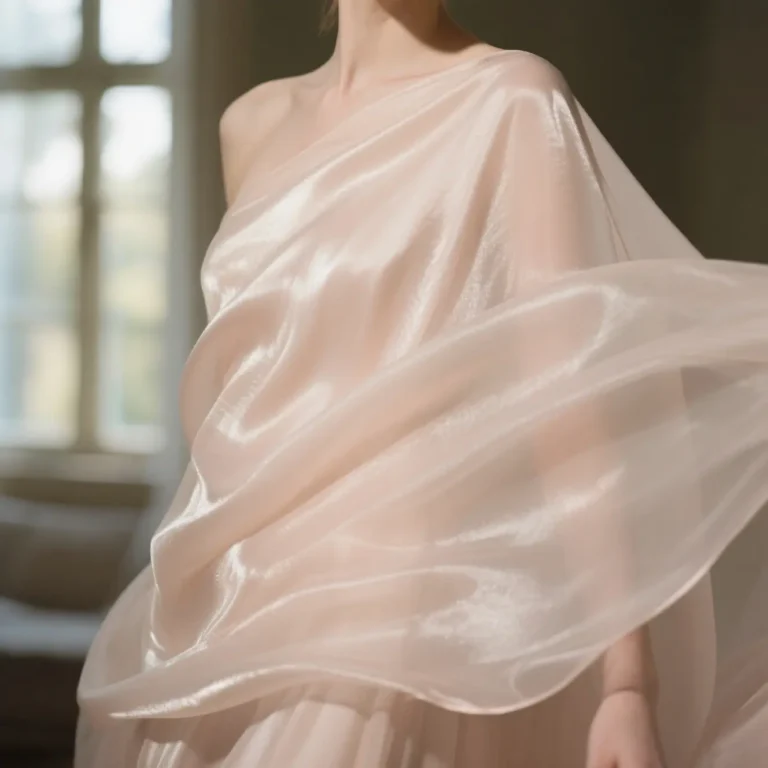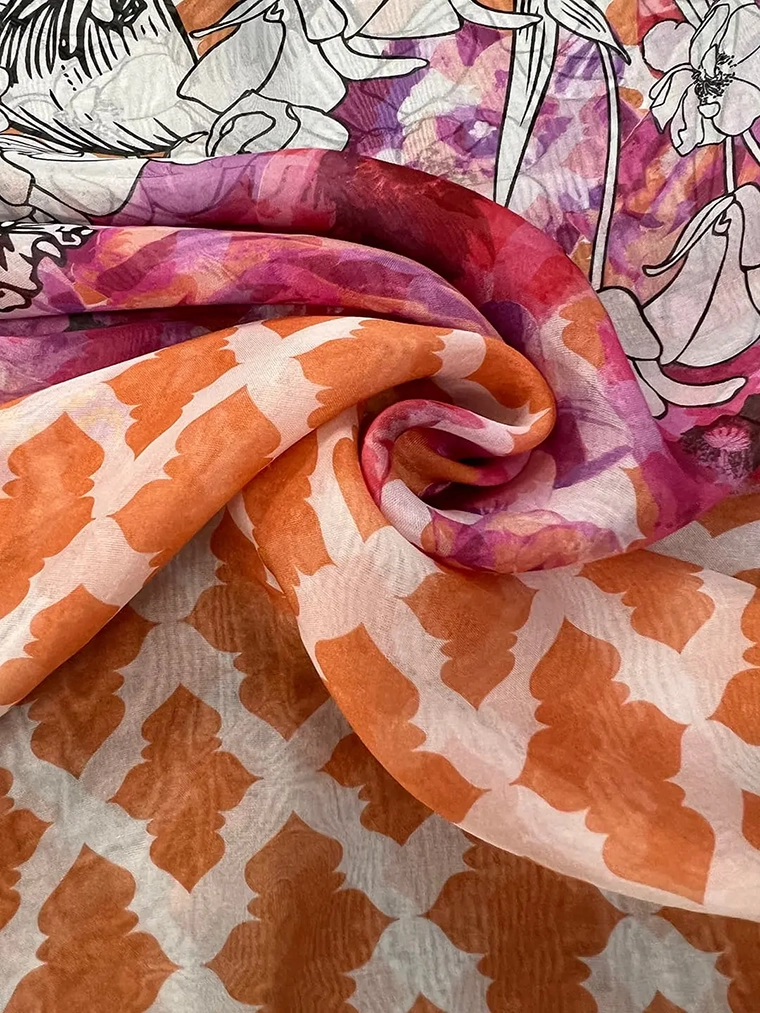Physical Address
304 North Cardinal St.
Dorchester Center, MA 02124
Physical Address
304 North Cardinal St.
Dorchester Center, MA 02124

In the realm of luxurious fabrics, chiffon, also known as Qiao Qisha or Qiao Qizou in Chinese, holds a special place. Among the various types of chiffon, silk chiffon fabric stands out with its exquisite qualities and unique characteristics. We’ve previously introduced chiffon, also referred to as George yarn, but now, let’s delve deeper into the world of silk chiffon.
Silk chiffon fabric is composed of 100% mulberry silk, a natural fiber type that sets it apart from many other materials. Its appearance exudes an air of elegance and sophistication. The fabric has a delicate, lightweight texture that drapes beautifully, creating flowing and ethereal looks. When used in clothing, it gives garments a sense of movement and grace, making the wearer feel like they’re floating on air.
One of the most significant advantages of silk chiffon is its remarkable benefits for human skin. Wearing silk chiffon fabric over the long term is highly beneficial. It offers a cool and breathable experience, ensuring that the body stays comfortable even in warmer climates. The fabric’s strong moisture absorption capabilities mean it can effectively draw sweat away from the skin, keeping the wearer dry and fresh. These natural properties make silk chiffon not only a fashion choice but also a healthy one, making it a truly exceptional silk fabric.
Design:Cross Fabric Width:53/54“ (140CM) Industry Weight:25 GSM Content:100% Mulberry Silk Country of Origin:China

However, like all things, silk chiffon fabric is not without its drawbacks. In some aspects, it doesn’t measure up to imitation silk chiffon fabric. For instance, after washing, it has a tendency to become grayish and lose its original luster. Additionally, exposure to direct sunlight can cause the fabric to yellow, so proper care regarding sunlight is crucial. Handling silk chiffon is also more troublesome compared to other fabrics, as it typically requires hand washing to maintain its integrity. Moreover, its fastness leaves something to be desired. The yarn is prone to stretching, and seams can easily tear, which means that garments made from silk chiffon need to be treated with extra care.
With the passage of time and the evolution of the textile industry, silk chiffon fabric and silk georgette have gradually emerged as two distinct varieties. This differentiation is now clearly reflected in the labeling of many silk garments and silk scarves. Currently, silk yarns can be categorized into two main types. Silk yarns that maintain a smooth and non – wrinkled appearance are classified as silk chiffon fabric, with a shrinkage rate of approximately 3 – 5% after launching. On the other hand, the rougher and wrinkled silk yarns are known as silk geki, which have a significantly higher shrinkage rate of around 15% after launching.
Understanding these nuances in silk chiffon fabric is essential for both fashion enthusiasts and those in the textile industry. Whether you’re considering purchasing a silk chiffon garment or simply interested in learning more about luxurious fabrics, knowing the ins and outs of silk chiffon can enhance your appreciation for this beautiful material.